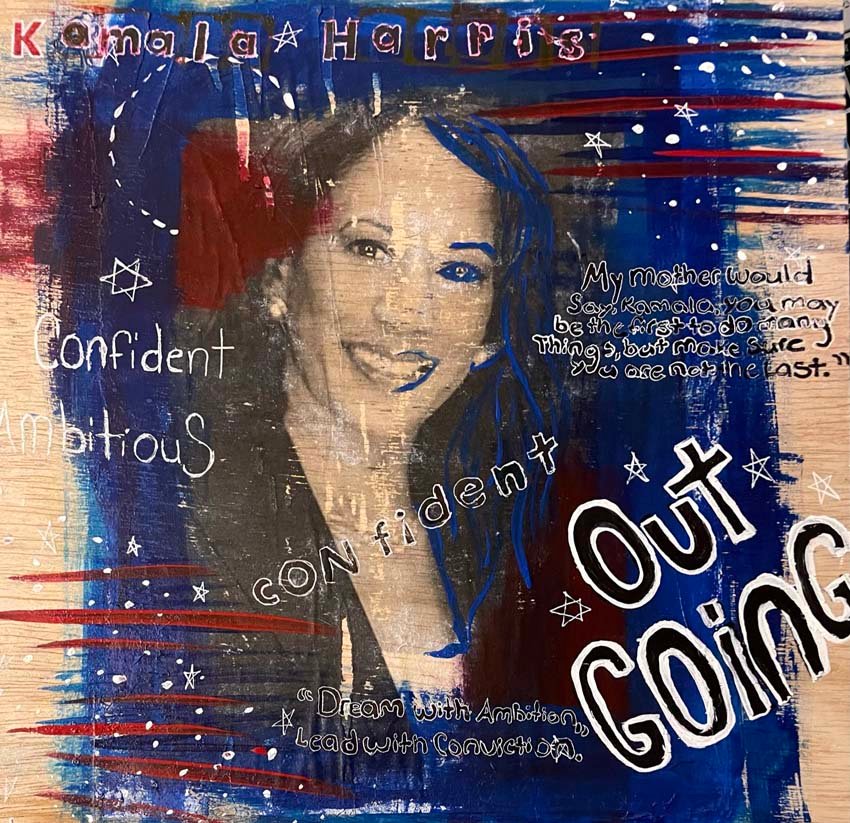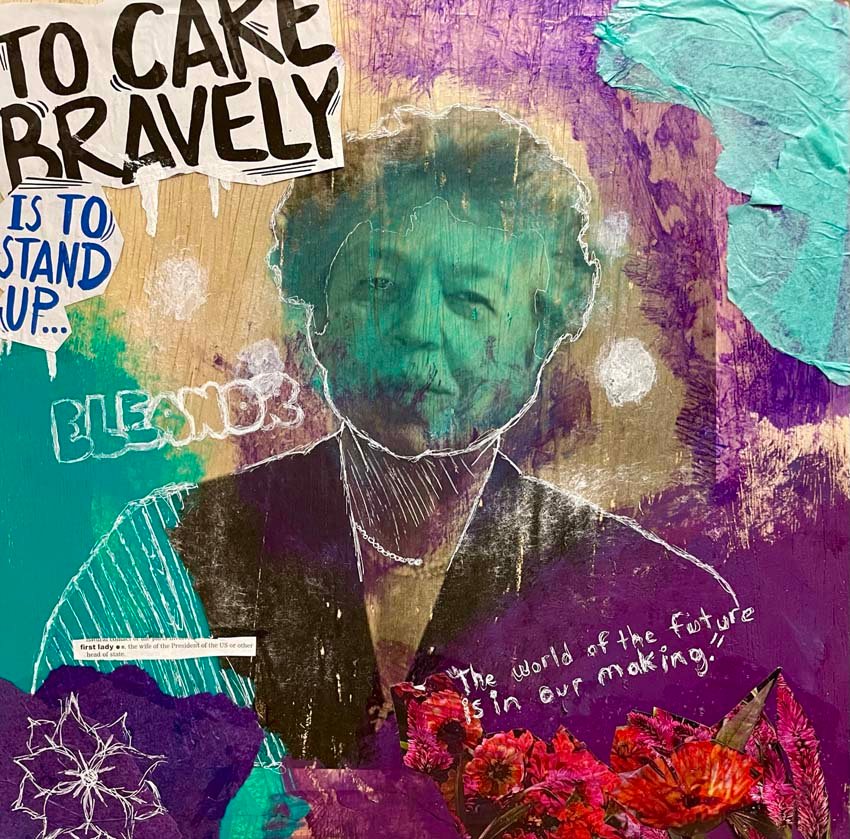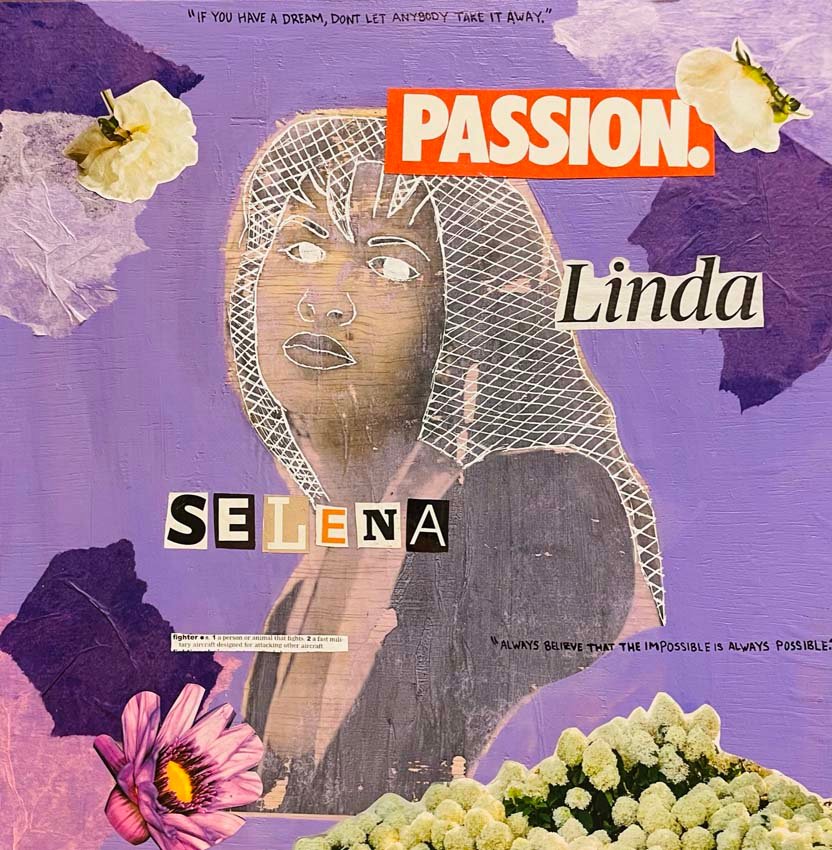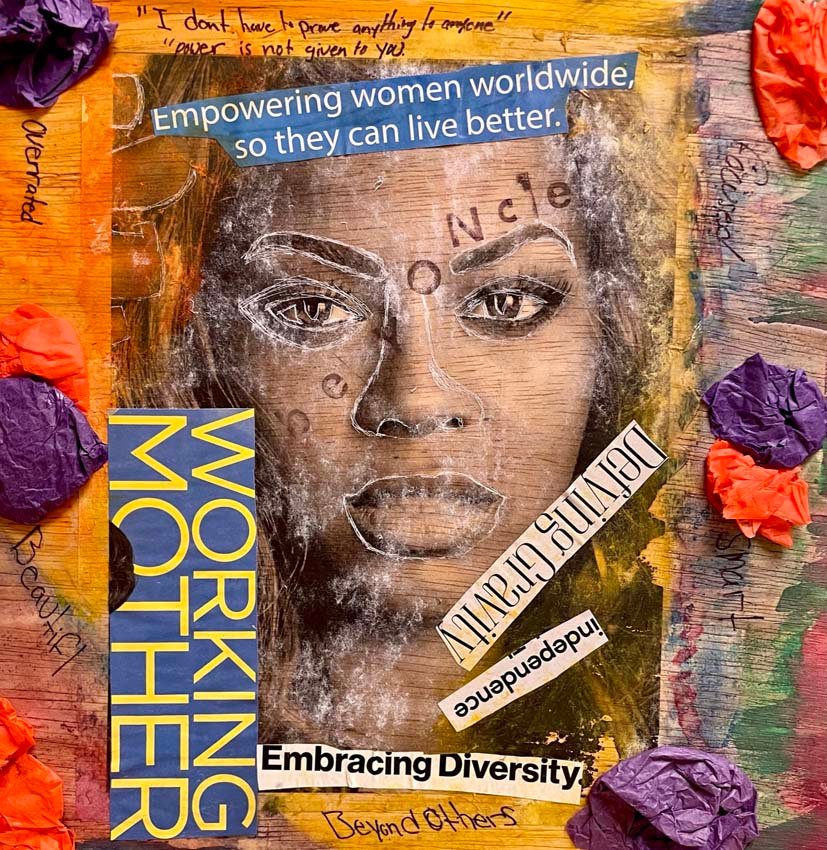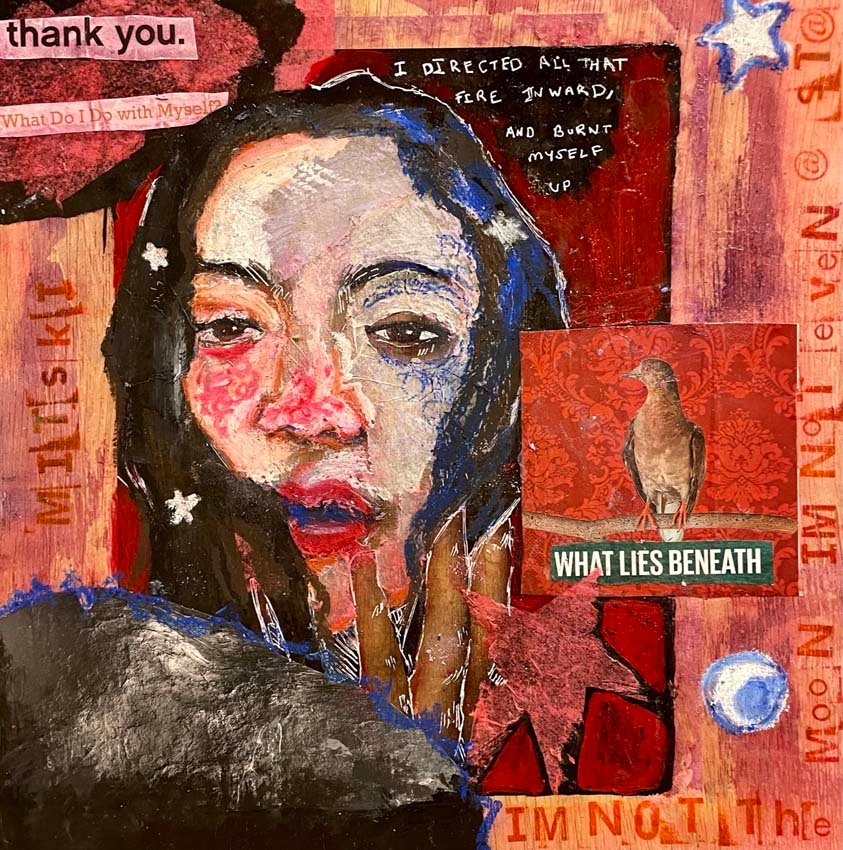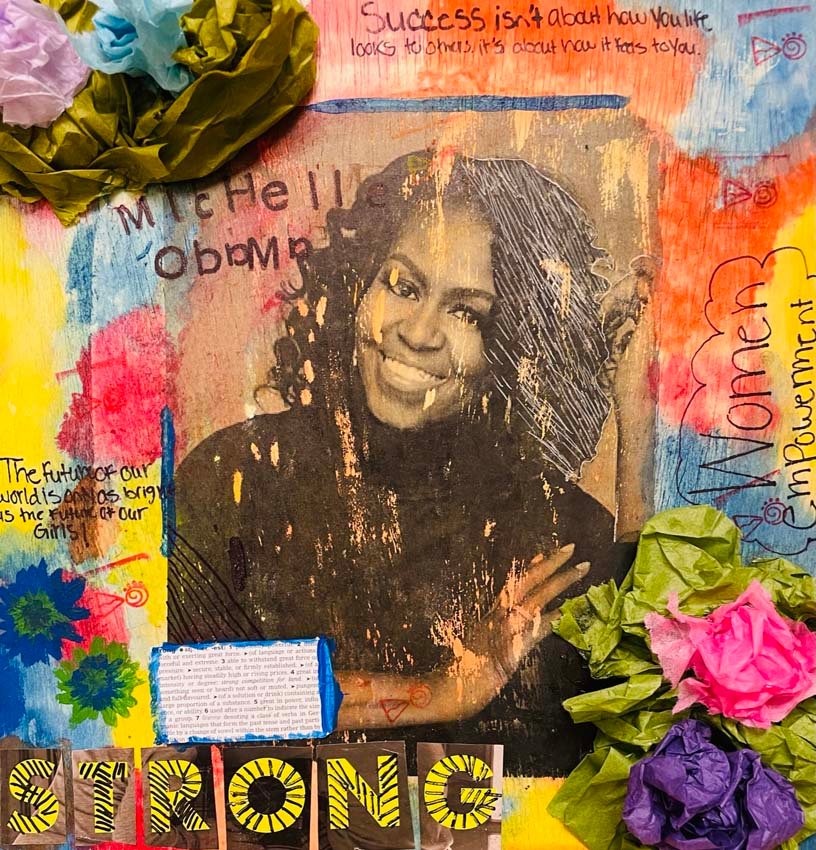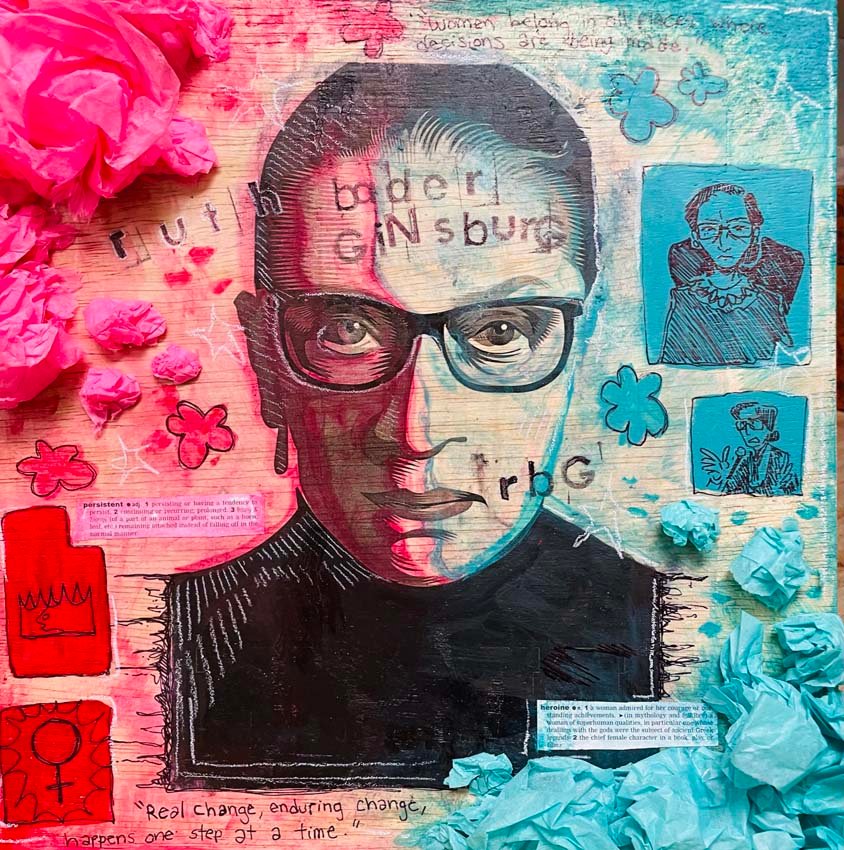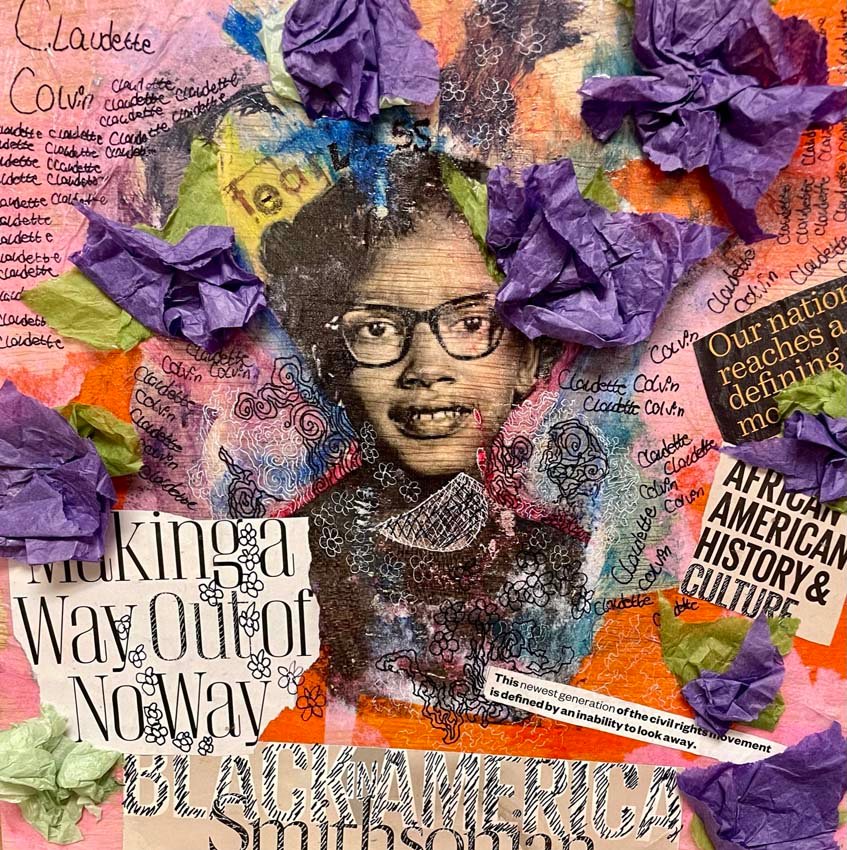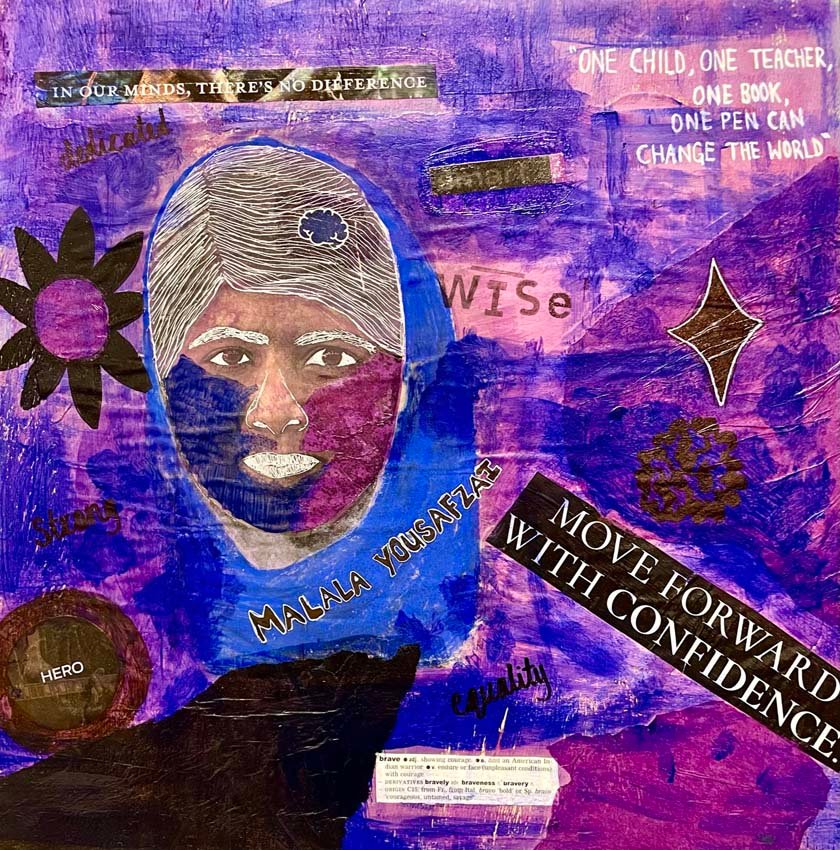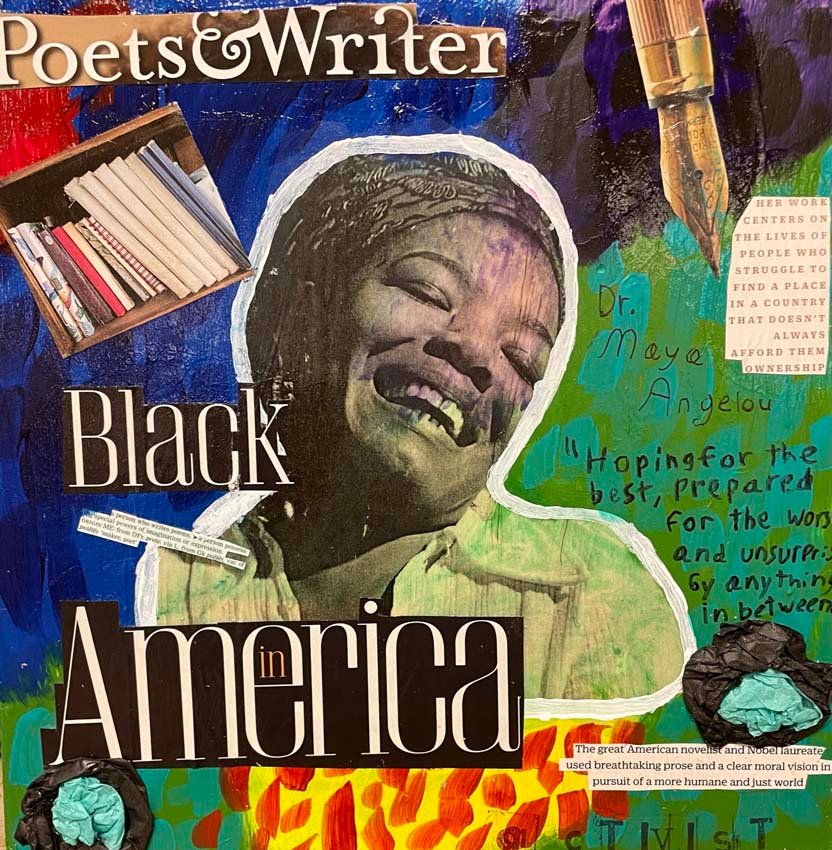+ By Desiree Smith-Daughety + Photography courtesy of Annapolis High School Art Program
Capturing high school students’ attention, let alone their interest, is the grail that many teachers seek. Jessica Packer Jackman, visual arts director for Annapolis High School, has enlisted her students’ help. When it comes to art projects, “I get the kids’ choice involved, too,” she says. And something about that acknowledgment and being given agency intrigues these young students, inspiring them to willingly engage in their educational planning.
When selecting art projects for the academic year, Jackman tries to combine skill set with art medium, a method that she has found to be a good way to organize lessons. For example, if they’re going to work on shading, students will use charcoal, and if the next lesson is blending, then they’ll use oil pastels.
Jackman isn’t too proud to learn alongside them as well. At the end of March, the students began working on a big project to celebrate Women’s History Month. “It was a big mix of everything, so they could end the school year feeling they’d mastered a lot of media,” she says. “That was 2022, and the first time I’d done this type of project with them.” Jackman wasn’t sure how it would work out. “I had to honestly mess up a few projects until I got to the point of saying, ‘We’re going to discover this together,’” she says.

Her choice of a school project for Women’s Month was so that the students would focus on diversity, specifically women who haven’t had things easy in life and had to overcome obstacles and build their strength. “Kids would pick someone, and I’d challenge them on why,” she says. She had a question ready for them: What challenges did this woman overcome?
Jackman tried encouraging students to select someone who isn’t talked about as much. “While we did have classics like Harriet Tubman and Frida Kahlo, how about Eleanor Roosevelt—students didn’t know what she did,” she says. Students conducted research to learn what various women had chosen as their platform. Then they either had to rethink whom they had chosen or defend their choice.
Indeed, their choices varied. For example, one student selected soccer player Mia Hamm and, when asked who she was, explained how Hamm did a lot to promote women in soccer. Another selection was Beyoncé because she has done impactful work aside from her music achievements and accolades, including becoming the founder, chairwoman, and CEO of Parkwood Entertainment, becomingthe cofounder, CEO, and owner of Ivy Park, and launching and supporting various charity organizations.
The students had to inquire about what it means to be a woman who’s admired and who has changed the world in some way, and then formulate their answers through visuals. “I would tell them, ‘You need to show me why they’re so great. If I pick up a black-and-white photo of Eleanor Roosevelt, I won’t care,’” she says. “Their goal was to use imagery to communicate the importance of whom they chose.”
Each student’s first choice was usually not their final choice for the project. They’d initially pick someone in popular culture or someone who was rich or looked cool. “The project helped students think about who it is they admire, and why, and what it means to admire somebody. That was a big one,” she says. “Yes, we have celebrities who are gorgeous and in videos, but it’s not something to really admire as something they did. When they looked up certain individuals, they found not as much content as they’d thought, so they had to do some further analysis.”
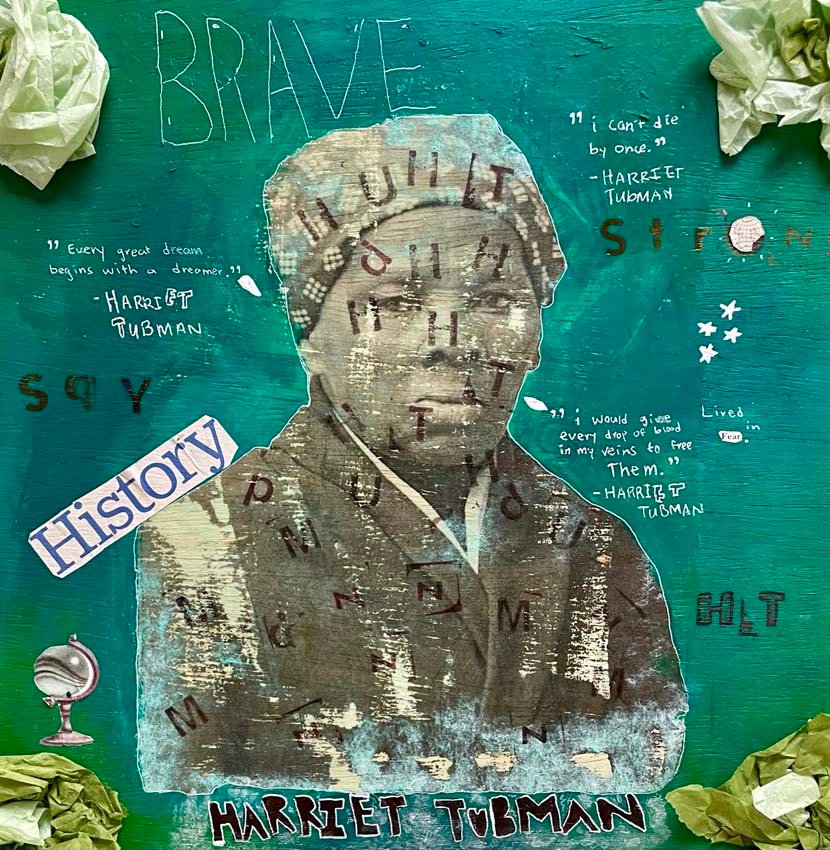
The artwork that the students created had to incorporate quotes from their subjects and images from magazines that would work well in portraying them. They had to know their subject’s personal style. For example, the artist Frida Kahlo is often portrayed alongside flowers and monkeys, both of which were featured in her own artwork.
The pieces also focused on the use of layering. Jackman’s takeaway was that they could not make the piece all at once but rather layer and build, just as the women did to achieve their great accomplishments. “The kids couldn’t do the next layer without the first layer drying,” she says. It demonstrated how the women they selected didn’t do influential things right away. For Michelle Obama, it took years of doing small things to become as influential as she is now.
The layering was frustrating for some, and that was part of the lesson—connecting this emotional response to their subjects; while they experienced adversity, they had to move forward, making and fixing mistakes. “We discussed this a lot in class,” says Jackman. “It wasn’t a simple line to become Harriet Tubman. Why couldn’t she do the things she did right away? What challenges do we have today to be influential? This is especially impactful with kids today who want immediate results but learn they can’t always rush things and must do it at a certain pace.”
Annapolis High School is an International Baccalaureate® (IB) school. The IB is an academic program that focuses on getting students to think critically, consider the reasoning behind actions that are impulsive but don’t bring good results, and be empathetic with others. The art program under Jackman’s helm is part of the standard high school class offerings rather than the IB program, but it incorporates the ideas of conceptual thought and making personal connections.
“We really try not to do things that are boring, going beyond art on paper to get them to dig deeper and apply what they’re learning to the real world,” explains Jackman. “The art program is trying to show that art is bigger than putting magazine pictures together for a pretty collage. They get art class every other day. Some kids initially come to art class and say, ‘Why do I have to take art?’ but are challenged to think about things they normally wouldn’t.”

Being challenged is one of the keys to students’ success. Jackman also has a series of projects that she leads every year on the theme of art with a purpose, meaning it must have an impact on either community or society. For example, students made 12 murals that were sent over to the Light House shelter in Annapolis, and then the students visited the shelter to see the installation. Another project involved a local nursing center for people with dementia. The students were each given a photo of one of the residents with dementia, and they had to create a personalized piece based on information they’d been given about the individual.
Projects for the current year include a memory project, in which students receive class photos from impoverished schools and each of those children is assigned to an art program student who will create an individual portrait so that each child will have a likeness of themselves. “It’s something they didn’t have before, because these are kids who don’t have anything,” says Jackman.
The students will also create a large chicken, which will join the iconic Annapolis flock that adorns the Annapolis Arts District and beyond under the moniker “Hatching the Arts.” It is slated to roost permanently at the Busch Annapolis Library on West Street. As Jackman says, “When students know that they’re doing projects for something, they become more engaged with it.”
